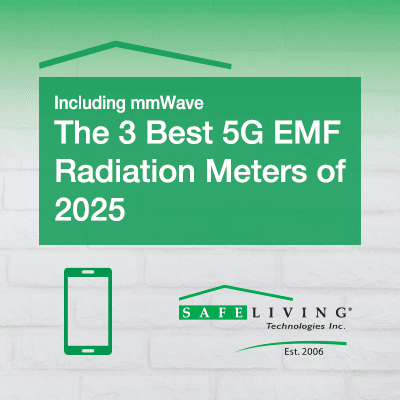What Makes A 5G EMF Meter Different?
What Makes A 5G EMF Meter Different?
When 5G first started rolling out, there was a ton of confusion about what it actually was and how we might be able to measure it.
Part of the problem is that 5G isn't just a single frequency, or even a single technology. It's a whole spectrum of frequencies that includes low-band, mid-band, and high-band (the millimeter waves we talked about earlier) signals.
Most EMF meters that you'll find on the market right now (including some of my favorites like the Trifield TF2) are great at detecting RF (radio frequency) radiation from sources like WiFi, Bluetooth, or older cellular networks.
However, they usually top out at reading frequencies around 6 to 8 GHz.
So, here is where we have a problem: 5G millimeter waves operate between 20 GHz and 40 GHz, well beyond what most meters can detect.
So, what makes a 5G EMF meter different?
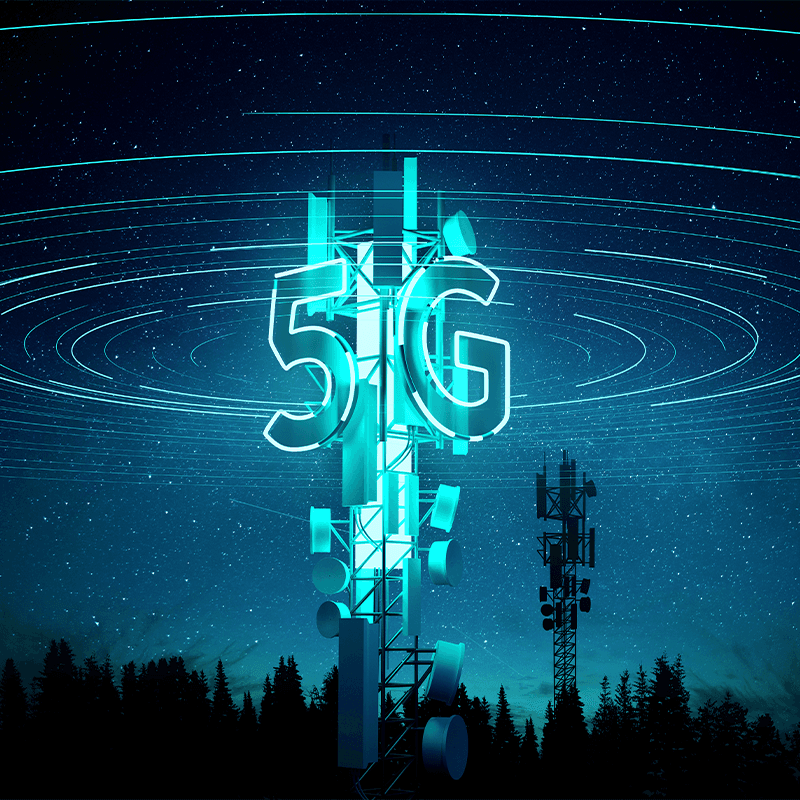
1. Higher Frequency Detection
First, and most importantly, is the ability to detect very high-frequency sources of radiation, especially in the millimeter wave (mmWave) band.
These are typically the frequencies that are being used in most cities and urban areas for 5G, especially places like city centers, sports stadiums, and other busy places.
In order to measure these, your meter needs to have a specialized antenna that can accurately detect these high-frequency signals, and the right kind of meter to measure them correctly.
2. Specialized Antenna
Most RF meters use internal or standard stub antennas to measure radiation up to around 8 GHz.
However, 5G-capable meters, like the ones we'll talk about shortly, often use stub antennas calibrated for 20-40 GHz.
In some cases, these meters will also use, or offer, directional horn antennas that can help pinpoint exactly where the radiation is coming from.
This is especially important because mmWave 5G signals don't travel very far compared to lower frequency signals, and are highly directional.
If you have an EMF or RF meter that can't detect these waves, you might think you're environment has far less EMF radiation exposure than it really does.
3. Attenuator Options
Millimeter wave signals can actually be really strong, especially at short range.
In order to deal with this, some high-end 5G meters offer optional attenuators, which reduce the signal strength going into the meter and prevent the meter from being overwhelmed.
This is one of the ways that professional-grade 5G meters can still be really accurate across a very broad range of environments, because they have attachable attenuators and antennas to adapt the signal detection to their needs.
To Summarize:
If you're using a standard EMF or RF meter that stops around 6-8 GHz, you're likely missing out on a big part of the 5G spectrum.
That's why this guide is going to focus specifically on the available meters that were built, or at least optimized, to detect the full range of 5G signals.
The Best 5G EMF Radiation Meters Of 2025
Like we talked about above, when it comes to detecting 5G radiation, especially the high-band frequencies, not just any EMF meter will do.
Since 5G is newer technology, the demand for meters that can detect it is still far lower than it is for standard EMF meters, which means we have fewer options available to us.
However, there are still a few great consumer-grade 5G meter options that work really well, and that's what I'll be covering in this section.
1. Safe And Sound Pro MmWave Meter
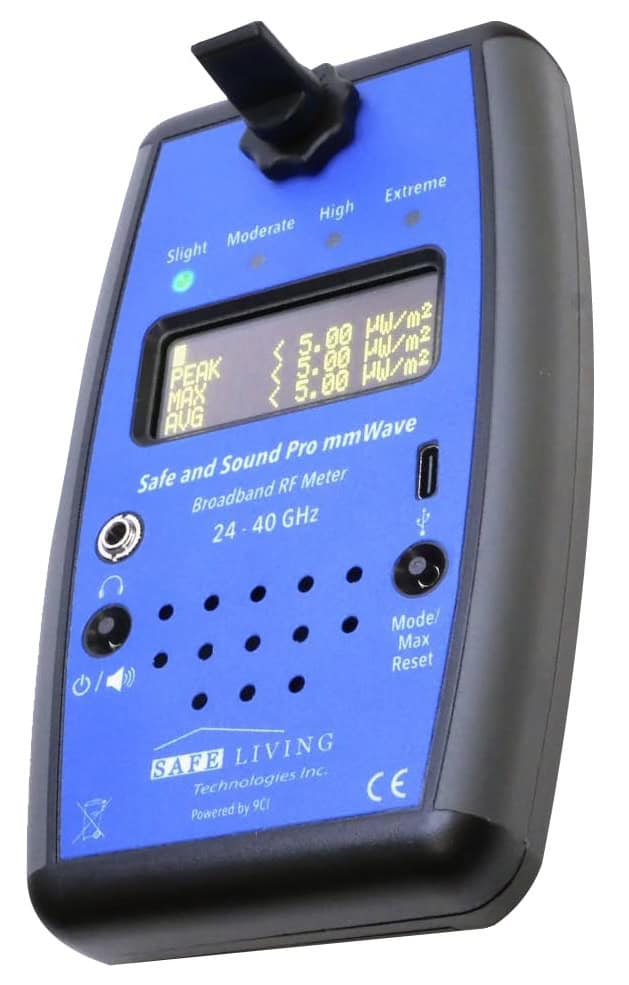
In my opinion, the Safe and Sound Pro mmWave from Safe Living Technologies is the best meter for measuring true high-band 5G radiation (20-40 GHz).
This is the first consumer-level device in North America (don't worry, you can get it overseas as well) that accurately measures the frequency bands where millimeter wave 5G operates.
Until very recently, this really wasn't even possible unless you wanted to spend thousands and thousands of dollars on lab-grade equipment, accessories, and calibration.
What Makes It Unique
- True mmWave Detection: Don't be fooled, some RF meters will say they detect 5G, but they can't actually detect frequencies in these ultra-high ranges. However, the mmWave Pro actually can detect these true 5G millimeter waves.
- Optional Horn Antenna: If you want better directional detection (locating exactly which way a source of radiation is coming from), the optional horn antenna you can get with this meter can offer that.
- Extremely Sensitive: If you get the optional attenuator (I'd suggest you do), this meter can detect signals as low as 5 µW/m² and as high as 50,000,000 µW/m²
- Professionally Calibrated: Most standard EMF and RF meters are not sensitive or powerful enough to need calibration; however, this one does. Luckily, the meters come already professionally calibrated to meet ISO 9001:2015 and ISO/IEC 17025 standards.
How It Works
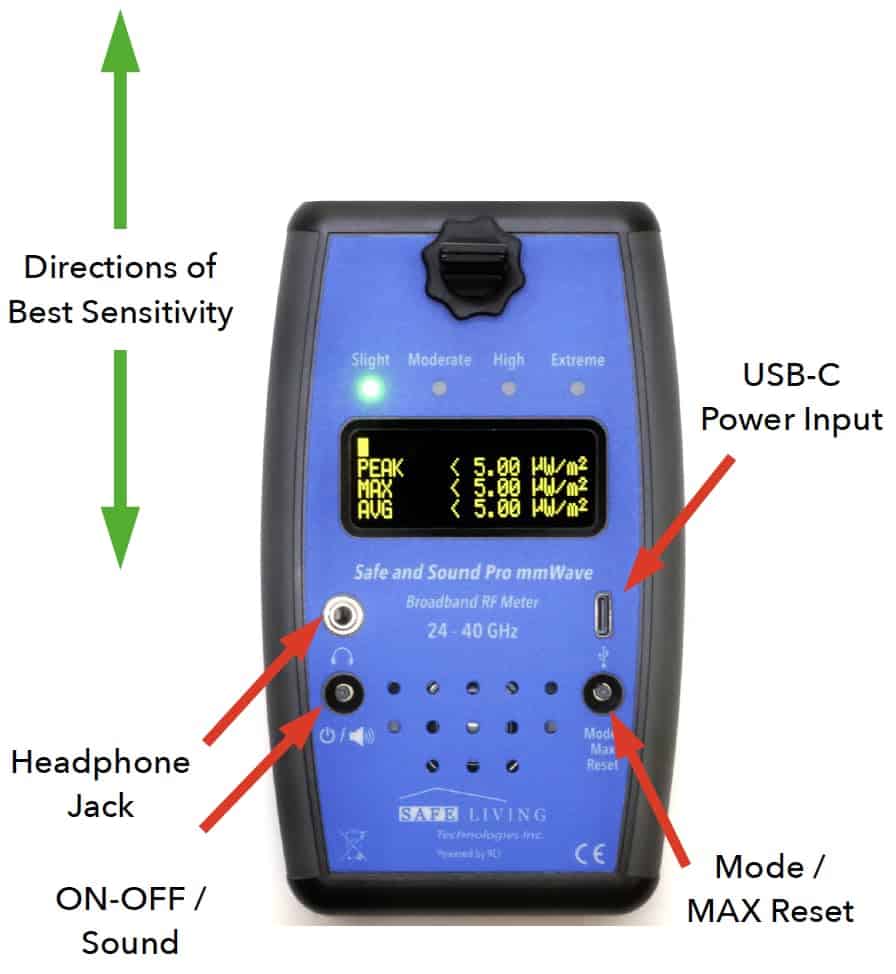
As soon as you turn on the device, it first performs a quick self-calibration and displays a battery indicator.
You can switch between antennas (if you have any optional ones) by selecting the appropriate mode on the display.
When using the standard stub antenna that comes with it, be sure the SLT logo is facing forward for optimal detection.
As you move through an environment, the meter gives you a peak (PEAK), average (AVG), and MAX readings.
It will also display an LED indicator on the front panel to help you understand the potential danger of the detected frequencies:
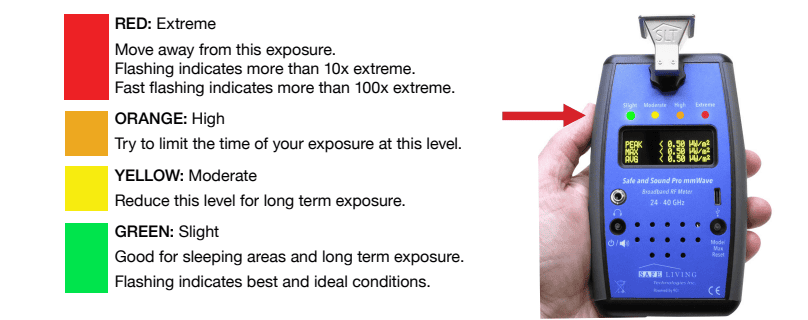
In addition to the LED light, there is also a built-in speaker that will give you real-time audio feedback about the detected frequencies.
I don't want to bog you down too much into the details of how this works, but if you want to read more, you can check out the user manual.
What It Doesn't Do
Just so we're clear:
This meter does not measure electric fields (EF) or magnetic fields (MF). So, if you're used to meters like the Trifield TF2, which measure all three types of EMF radiation, then it's good to know that the mmWave Pro ONLY measures RF radiation.
It also does not detect lower-frequency RF radiation, like WiFi, Bluetooth, or sub-6 GHz 5G. So, for your general EMF radiation detection needs, a quality standard meter (like the Trifield TF2) will actually do more for you.
Final Thoughts
This meter isn't for your casual EMF detection, and the price does reflect that.
However, I really believe that this is far and away the best consumer-grade 5G radiation meter on the market right now.
If you want to learn a ton more about how the Safe and Sound Pro mmWave works, here is a great video from the company:


